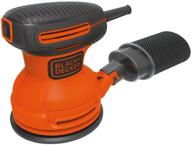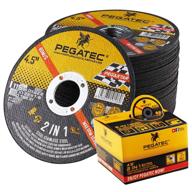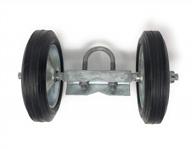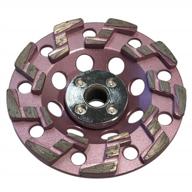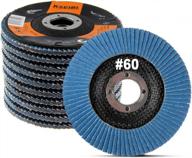Choosing the Right Abrasive Wheel or Disc
Abrasive wheels and discs are used for grinding, cutting, sanding, polishing, and sharpening applications across many trades and industries. Selecting the proper wheel or disc is important for working efficiently and safely.
Types of Abrasive Wheels and Discs
There are various types of abrasive wheels and discs available:
- Grinding wheels - Used for grinding and sharpening metals, stone, glass, and other materials. They come in different shapes like straight, cylinder, cup, and dish.
- Cutting wheels - Designed for cutting metal, masonry, tile and other hard materials. Thin cutting wheels can cut stainless steel, rebar, and pipe.
- Sanding discs - Employed for smoothing and polishing wood, metal, automotive surfaces, and composites. Discs are available in different grits and can be used by hand or with a sander.
- Wire wheels - Made of twisted steel wire for cleaning, deburring, and polishing metal surfaces.
- Diamond wheels - Contain industrial grade diamonds and are very hard. Used for sharpening hard materials like ceramics and stone.
- Flap discs - Abrasive disc with overlapping flaps of sandpaper that adapt to contours. Used for sanding, grinding, and finishing.
Factors to Consider
There are several factors to take into account when selecting abrasive wheels and discs:
| Factor | Details |
|---|---|
| Abrasive type | Aluminum oxide, silicon carbide, zirconia alumina, and ceramic alumina perform well for most applications. |
| Grit size | Coarse grits remove material faster while fine grits provide a smoother finish. |
| Backing material | Paper, cloth, fiber, plastic, or mesh backings suit different uses. |
| Maximum speed | Check the max RPM rating as per the wheel size and material. |
| Arbor hole size | Must match the machine arbor diameter. |
Proper Wheel Selection
Follow these tips for choosing suitable wheels and discs:
- For grinding steel, select aluminum oxide or zirconia alumina wheels.
- For cutting stainless steel, use resinfiber thin cutting wheels.
- For sanding wood, choose open coat aluminum oxide discs.
- For paint removal, pick medium grit zirconia flap discs.
- For sharpening knives, use fine grit aluminum oxide bench wheels.
Safety Tips
Observe these safety precautions when working with abrasive wheels and discs:
- Check wheels and discs for cracks or damage before mounting.
- Ensure the operational speed does not exceed the rated max RPM.
- Wear eye and face protection to prevent injury from debris.
- Use wheel guards, tool rests, and other safety equipment.
- Let the wheel reach full speed before starting to grind or cut.
With the right wheel selection and safety practices, abrasive discs and wheels can help tackle grinding, cutting, and sanding work safely and efficiently.
Top products in 💥 Abrasive Wheels & Discs
Types of Abrasive Wheels and Discs
Abrasive wheels and discs come in a range of types, each designed for specific applications. The type selected depends on the material and task at hand.
Grinding Wheels
Grinding wheels remove material and shape workpieces through abrasion. Common types include:
- Straight wheels - Used for general purpose grinding, sharpening, and surface finishing.
- Cylinder wheels - Straight wheels with a cylindrical cross section for plunge grinding.
- Tapered wheels - Provide clearance for grinding holes or angled surfaces.
- Recess wheels - Dish shaped with a recession to grind specific areas of a workpiece.
- Segmented wheels - Made up of separate abrasive blocks for controlled grinding.
- Cup wheels - Shallow cylindrical wheels used for surface grinding.
- Saucer wheels - Type of cup wheel with a depressed center for grinding convex shapes.
- Diamond wheels - Contain industrial grade diamonds for sharpening extremely hard materials.
Cutting Wheels
Cutting wheels slice through metal, masonry, ceramic and other hard materials. Types include:
- Abrasive cutoff wheels - Thin, disc-shaped wheels for cutting steel, stainless steel and other metals.
- Masonry cutting wheels - Designed for cutting concrete, brick, tile and stone using handheld or stationary saws.
Sanding Discs
Sanding discs smooth surfaces and remove residue. Common varieties include:
- Flap discs - Overlapping abrasive flaps that adapt to contours for sanding and finishing.
- PSA discs - Sandpaper with pressure sensitive adhesive backing that sticks to sanding pads.
- Roloc discs - Use Roloc connectors to attach different grit sandpapers to a power sander.
- Hook and loop discs - Sandpaper attaches via hook and loop fasteners to random orbital sanders.
Wire Wheels
Wire wheels are made of thousands of tiny wire bristles twisted together. They are used for:
- Removing rust, scale, and oxidation from metal surfaces.
- Cleaning welds and brushed metal finishes.
- Deburring machined parts.
Selecting the right abrasive wheel or disc boosts performance and productivity for grinding, cutting and sanding applications.
Cutting and Grinding Wheels
Cutting and grinding wheels are essential tools for machining, fabrication, construction and other industrial applications. They consist of abrasive particles bonded together to cut, grind and finish hard materials.
Grinding Wheels
Grinding wheels remove material from metal, glass, stone or concrete workpieces through abrasion. They come in different types:
- Straight wheels - Used for surface grinding, cutting, sharpening, and general purpose applications.
- Cylinder wheels - Shaped for plunge grinding into holes and recesses.
- Tapered wheels - Allow grinding of angled surfaces and access to confined areas.
- Recess wheels - Have a recessed section for localized grinding.
- Segmented wheels - Made up of separate abrasive blocks for controlled grinding.
Key factors that affect grinding performance:
| Factor | Description |
|---|---|
| Abrasive type | Aluminum oxide, silicon carbide, zirconia alumina, diamond, etc. |
| Grit size | Coarse grits cut faster, fine grits give smoother finish. |
| Grade | Harder wheels retain grains longer vs. softer wheels. |
| Bond | Holds abrasive grains together. Vitrified, resinoid bonds commonly used. |
| Structure | Open structure provides faster cutting.Closed coats last longer. |
Cutting Wheels
Cutting wheels are used for slicing through metal, masonry, refractory materials and more. Types include:
- Abrasive cutoff wheels - Thin discs for cutting steel, stainless steel, other metals.
- Diamond blades - Uses industrial grade diamonds for very hard materials.
- Masonry wheels - For cutting concrete, stone, tile.
Factors that influence cutting performance:
- Wheel thickness - Thinner discs allow tighter curves but need more RPM.
- Abrasive type and concentration - Diamond or aluminum oxide commonly used.
- Reinforcement - Fiberglass mesh, nylon or wire for durability.
- Arbor size - Must match machine arbor for proper mounting.
Using the correct cutting or grinding wheel boosts productivity and improves safety when working with metal, masonry and other hard materials.
Flap Discs & Tips for Selecting Abrasive Wheels and Discs
Flap Discs
Flap discs are abrasive discs used for grinding, sanding, deburring, and finishing metals, wood, composites and other materials. They consist of overlapping flaps of sandpaper that flex to match the workpiece contour.
- The flaps enable flap discs to conform to curved or irregular surfaces unlike rigid discs.
- The flexibility prevents gouging the workpiece and provides a consistent finish.
- Zirconia alumina flap discs remove material aggressively while ceramic flap discs give a fine finish.
- Coarser grits are used for heavy stock removal and finer grits for final finishing.
Flap discs are commonly used for:
- Smoothing welds and removing spatter on steel fabrications.
- Sanding contours on auto bodies prior to painting.
- Removing rust from metal surfaces.
- Finishing and polishingedges on countersunk holes.
Tips for Selecting Abrasive Wheels and Discs
Consider the following when choosing abrasive wheels and discs:
- Abrasive type - Select the appropriate abrasive for the material like aluminum oxide, silicon carbide, or zirconia alumina.
- Grit size - Coarser grits cut faster while finer ones give a smoother finish.
- Maximum safe speed - Ensure the operating speed does not exceed the max rated RPM.
- Backing material - Paper, cloth, fiberglass influence durability and performance.
- Arbor size - Confirm the wheel arbor hole size fits the machine spindle.
Additionally, check manufacturer wheel markings and refer to safety guides. Using the right wheel or disc boosts efficiency and helps get professional results.
How Amazon Prime Benefits Buyers of Abrasive Wheels & Discs
For those who regularly purchase abrasive wheels, discs, and other grinding and cutting accessories, joining Amazon Prime can provide some useful advantages.
Free Two-Day Shipping
One of the biggest perks of Amazon Prime is free two-day shipping on millions of eligible items. This means abrasive discs, flap wheels, cut-off wheels, and other accessories can be delivered quickly with no shipping fees.
Having supplies shipped rapidly is extremely convenient for professional contractors, metal workers, automotive shops, and other frequent users of abrasives who rely on these consumables for their businesses.
Lower Prices
Amazon Prime members get exclusive access to special discounts and sales throughout the year. So joining Prime can help save money on bulk orders of abrasive wheels, sanding discs, and other supplies.
The savings on large orders of abrasives from reputed brands like 3M, Norton, Walter Surface Technologies can really add up over time for regular commercial buyers.
Easy Reordering
The Amazon Dash Replenishment service enables Prime users to easily reorder frequently used abrasive supplies. When stocks run low, items can be reordered with one click.
Quick reordering ensures shops, garages, and work sites don't run out of essential abrasives like cut-off wheels, flap discs, or sanding discs avoiding potential workflow disruptions.
Sharing Benefits
With Amazon Household, two adults and up to four teens and children can share Prime benefits. This allows multiple business partners or family members to take advantage of Prime on a single membership.
Overall, the free fast shipping, discounts, and convenience benefits make joining Amazon Prime worthwhile for regular buyers of abrasive wheels, discs, and sandpapers across trade industries.
What Are The Different Types Of Abrasive Wheels And Discs Available In The Market??
There are different types of abrasive wheels and discs available in the market. Some of the most common abrasive wheel abrasives are ceramic alumina, zirconia alumina, aluminum oxide, white aluminum oxide, aluminum oxide, and silicon carbide. The types of abrasive wheels include straight grinding wheels, cylinder or wheel ring, tapered grinding wheels, straight cup, dish cup, and saucer grinding wheels. Grinding wheels, sometimes called grit discs, are easily the most recognizable of any of the discs available and the most popular due to their general-purpose nature. They are available in several different sizes up to 10-inches and varying degrees of thickness to tackle specific projects. Common types of grinding wheel abrasive include aluminum oxide, zirconia alumina, and silicon carbide. Abrasive wheels are usually defined as a wheel consisting of abrasive particles bonded together using organic or inorganic substances such as resin.
What Are The Differences Between Bonded And Coated Abrasive Wheels??
Bonded and coated abrasive wheels are two types of abrasive wheels available in the market. The main differences between them are the method used to join the abrasive material to the product and the applications they are best suited for. Here are some key differences between bonded and coated abrasive wheels:
Bonded Abrasive Wheels:
Coated Abrasive Wheels:
Non-woven Abrasive Wheels:
In summary, bonded abrasive wheels are best suited for precision grinding and cutting applications, while coated abrasive wheels are ideal for general-purpose sanding, grinding, and polishing applications. Non-woven abrasive wheels are best suited for finishing and polishing applications.





